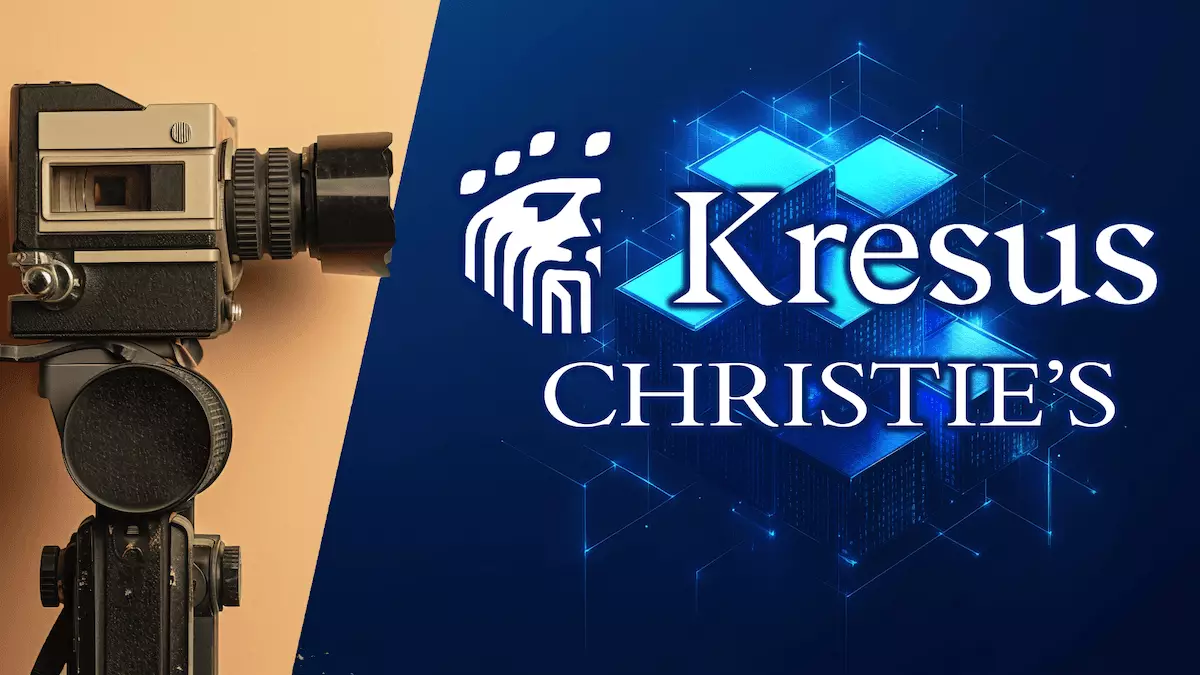In an exciting advancement at the crossroads of technology and art, Kresus—a well-known crypto wallet provider—has joined forces with the prestigious auction house Christie’s to innovate the way art collectors authenticate and maintain ownership of their valuable collections. This collaboration marks a significant shift in the art market, indicating a growing trend toward utilizing blockchain technology as a means of enhancing security and transparency in ownership verification.
The pilot program is set to launch with an auction titled “An Eye Towards the Real: Photographs from the Collection of Ambassador Trevor Traina,” scheduled for October 2 at Christie’s Rockefeller Center. The sale features an impressive array of photographic works, highlighting both mid-century artistic themes and contemporary pieces. By extending blockchain-based certificates of ownership to over 130 lots, Kresus aims to streamline and modernize the often cumbersome process of documenting provenance and ownership history.
Collectors attending the auction will receive exclusive, one-of-a-kind digital certificates for each purchased lot. The certificates will be meticulously recorded on the Base blockchain, ensuring a secure and unalterable record of ownership that can be conveniently accessed through the Kresus wallet. According to Trevor Traina, founder of Kresus, “Blockchain enables many things.” He highlights the frequent challenges faced by art collectors—often involving traditional paper documentation stored in file cabinets—and emphasizes how this partnership with Christie’s can transform the collection experience.
The event represents an opportunity to alleviate the burdens of provenance management by integrating cutting-edge technology into the art acquisition process. By offering digital certificates linked to physical artworks, Kresus and Christie’s pave the way for a more straightforward, transparent, and secure buying experience.
Ambassador Trevor Traina’s photographic collection, set to feature artwork from iconic photographers such as Diane Arbus, William Eggleston, Robert Frank, and Cindy Sherman, highlights significant cultural movements and themes. With a focus on female photographers and the evolution of color photography post-World War II, the collection encapsulates the richness of the mid-century artistic narrative. This sale not only celebrates the artistry of renowned figures but also acknowledges the growing role of women in the photographic arts.
Traina’s ambition is to leverage blockchain technology to solidify trust and authenticity in an industry often marred by uncertainty. “This partnership with Christie’s exemplifies how technology can enhance the experience for collectors,” he states, effectively bridging the gap between physical and digital asset management.
This pilot initiative serves as a defining moment for both organizations, demonstrating a commitment to embracing disruptive technologies in their sectors. By integrating blockchain certificates into the auctioning process, the initiative seeks to lay down a framework for a more transparent market, where buying, selling, and verifying artwork becomes easier for collectors and investors alike.
Nicole Sales Giles, Vice President and Director of Digital Art Sales at Christie’s, shares her enthusiasm for the pilot program: “Working with Kresus to offer blockchain-based certificates of ownership is a natural evolution of our commitment to authenticity and transparency in the art world.” This statement underscores the importance of innovation in maintaining consumer confidence within the art sector.
As the art world continues to grapple with issues of authenticity and provenance, the partnership between Kresus and Christie’s indicates a critical shift toward modernization. The combining of tangible art forms with intangible digital verification is paving the way for future models of ownership and asset management. Furthermore, this collaboration could inspire similar ventures aimed at enhancing other collectible markets, such as fine wines, vintage automobiles, and luxury items.
The Kresus and Christie’s initiative is not merely an experiment; it represents a bold foray into the future of art ownership, opening up new avenues of possibility for collectors, artists, and investors alike. As this pilot program unfolds, its success may very well shape the trajectory of the market, signifying the onset of a new era defined by security, transparency, and technological innovation.


Leave a Reply